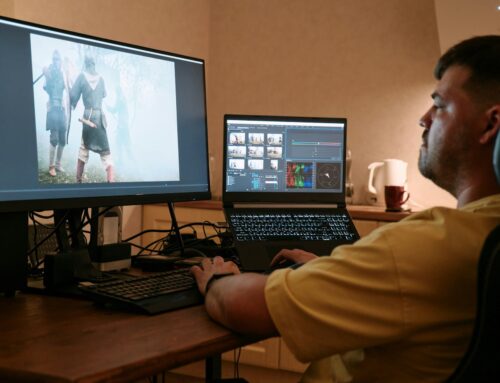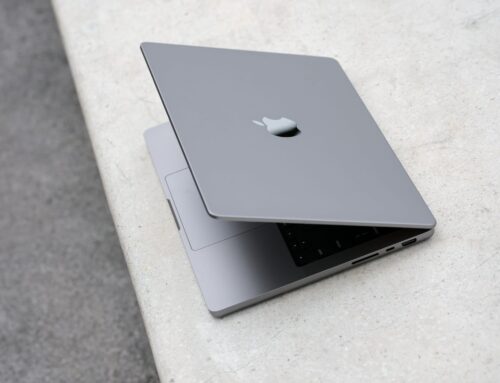Experiencing start-up errors on your desktop can be a frustrating ordeal. These errors often prevent you from accessing your essential files and can disrupt your daily tasks. While encountering such issues can seem daunting, many start-up errors can be resolved with a bit of troubleshooting and patience. Knowing how to address these problems gives you more control and can save you a trip to the repair shop.
Start-up errors can arise from various sources, such as hardware failures, software glitches, or improper configurations. Identifying the root cause is essential for finding an effective solution. Common error messages might include “No Boot Device Found,” “Blue Screen of Death,” or endless reboot loops. These issues may seem complex but often have straightforward fixes.
To resolve desktop start-up errors, you’ll need to follow a series of diagnostic steps. Basic troubleshooting can sometimes fix the problem quickly, but more persistent errors may require advanced techniques. Knowing when to apply which method can help you get your desktop up and running smoothly again.
Common Causes of Desktop Start-up Errors
Understanding the common causes of desktop start-up errors can help you diagnose and fix the problem more effectively. One frequent cause is hardware failure. Components such as the hard drive, RAM, or power supply might malfunction, leading to boot issues. For example, if your hard drive fails, your computer may display a “No Boot Device Found” error.
Another significant cause is software conflicts. These can occur if recently installed software or updates are incompatible with your operating system. Corrupted system files can also prevent your desktop from booting properly. This corruption might result from improper shutdowns, malware attacks, or incomplete installation of software.
Loose or disconnected cables can also lead to start-up errors. Check if all internal and external cables are securely connected. Even a slightly loose connection can disrupt the communication between your hardware components and the motherboard, leading to start-up problems.
Lastly, BIOS or UEFI settings can be the culprit. Wrong settings or a failed update can cause your desktop to fail during the start-up process. Ensuring these settings are correctly configured can often resolve the issue.
Basic Troubleshooting Steps to Resolve Start-up Issues
When your desktop encounters start-up errors, it’s essential to start with some basic troubleshooting steps. Begin by performing a simple restart. Many issues can be resolved by powering down your computer and starting it up again. If this doesn’t work, proceed to more specific checks.
Next, ensure all cables are properly connected. Check the power cable, monitor connections, and any peripherals such as the keyboard or mouse. A loose or disconnected cable can sometimes be the reason behind start-up errors.
If the basic checks don’t resolve the problem, try booting into Safe Mode. This mode allows your computer to start with only the essential drivers and services. To access Safe Mode, restart your computer and press the F8 key (or Shift + F8) before Windows starts loading. Once in Safe Mode, you can uninstall any recently added software or updates that might be causing conflicts.
Another effective step is to run a startup repair. Most modern operating systems come with built-in repair tools. For Windows, you can access these by booting from a recovery drive or installation media and selecting “Repair your computer.” These tools can scan for and automatically fix issues preventing your desktop from starting up.
By following these basic troubleshooting steps, you can often resolve desktop start-up errors without needing advanced technical knowledge. If these steps don’t fix the problem, it may be time to try more advanced techniques.
Advanced Techniques for Persistent Start-up Errors
If basic troubleshooting steps do not resolve your start-up issues, it’s time to move on to more advanced techniques. One effective method is to perform a clean boot. This process helps eliminate software conflicts by starting your system with a minimal set of drivers and startup programs. To do this, open the System Configuration tool (msconfig), disable all non-essential services and startup items, and restart your computer.
Another advanced technique is to check and repair the hard drive. Over time, hard drives can develop bad sectors that affect system performance and cause start-up issues. Use the built-in Error Checking tool on Windows or Disk Utility on macOS to scan and fix any disk errors.
Resetting the BIOS or UEFI settings to default can also help. Resetting these settings can resolve incorrect configurations that might be causing boot problems. You typically access these settings by pressing a specific key (often F2, F12, DEL, or ESC) during start-up. Once in the BIOS/UEFI menu, look for an option to reset to default or factory settings.
In some cases, reinstalling the operating system may be necessary. This step is more drastic but can be effective if system files are too corrupted to repair. Ensure you back up important data before proceeding with a fresh installation.
When to Seek Professional Repair Services for Start-up Problems
If all else fails, it might be time to seek professional help. Persistent start-up errors can sometimes indicate severe hardware or software issues that require expert attention. Recognising when to bring in a professional can save you time and prevent further damage.
If your computer consistently shows hardware-related error messages, such as those indicating hard drive failure or faulty RAM, it’s best to consult a professional. They have the tools and expertise to diagnose and replace defective components safely.
Another sign you need professional help is if the start-up errors are intermittent. This inconsistency can make it difficult to pinpoint the issue. A qualified technician can run comprehensive tests to identify and fix the problem.
Additionally, if you’ve exhausted all troubleshooting steps and advanced techniques without success, seeking professional assistance is the next logical step. Professional repair services can provide in-depth diagnostics and repairs that go beyond basic DIY methods.
Conclusion
Dealing with desktop start-up errors can be a daunting experience, but understanding the common causes and knowing how to troubleshoot can make a significant difference. From checking basic connections to applying advanced techniques, there are various methods to get your desktop back up and running. However, when these steps do not resolve the issue, knowing when to seek professional assistance is crucial.
At Forest City Computer Repairs, we specialise in expert desktop computer repair for all your start-up issues. Our skilled technicians quickly diagnose and resolve even the most stubborn problems, ensuring your system is back to running smoothly. Don’t let start-up errors throw off your routine—contact us today to schedule your repair and get your desktop computer working like new!







